#hinalung
Explore tagged Tumblr posts
Text

Igrot Hinalung Dagger
25 notes
·
View notes
Text
MC Design Guide
• Setting It is a fantasy world inspired by precolonial cultures in the Philippines, particularly in the Cordillera Administrative Region. Pan-atepán is the island where the game takes place. The island is a part of the Naparsuá Archipelago. In current, real-life terms, the Sentinel is Igorot by default. Even if you're not an Igorot or you don't use Igorot to refer to yourself, if you live in the Philippines, feel free to incorporate parts of your culture into the setting.
• Background Race is a social construct that does not exist in Pan-atepán. However, the Sentinel and every human in the game would be considered nonambiguous people of color by today's real-life terms. Note that I am appreciative of fanworks for the LSS and also encourage headcanons, even if they go against the established plot. Still, any LSS fanworks of humans, including the Sentinel, where this is not followed, will be ignored by the blog.
• Name Use names or words that derive from Malayo-Polynesian languages, or more specifically, a name or word in Kankanaey or Ilokano. Most names in LSS describe an object, dream, or phenomenon. Many are also nature-related. A few suggestions are offered if you don't know what to write.
• Gender, Sexuality, and Pronouns These options are customizable and changeable anytime.
• Age Locked to 25 years old.
• Weapon There are 5 weapon options and these are the bunéng knives, kalis sword, wasey axe, pana bow, and hinalung spear. You can only choose one to focus on.
• Gift The divine gift will either be the ability to see pieces of the past or visions of the possible future.
• Appearance Eye color, hair type, hair color, complexion, and height are permanently set. As for hairstyle, facial hair, body build, scars, tattoos, clothing, and adornments, they may change if you choose a different look when prompted. You may also use enchantment like pintas to temporarily change your appearance, including the ones otherwise listed as unchangeable. Changes like extra limbs, animal ears, and wings can also be temporarily added.
• Character Traits These traits are customizable up until Chapter 5 when these stats will be permanently locked. It may be noted if you act differently than before, but that's as far as it goes. These traits are one or the other. Empathetic/Apathetic, Considerate/Ruthless, Withdrawn/Sociable, Flirtatious/Reserved, Perceptive/Intuitive
• Skills Magical ability, combat ability, and Diwa mastery are traits that are also customizable up until Chapter 5. These stats will then be locked until a future Chapter focuses on skill training.
• Faith Your faith in humanity and your faith in deities are continuously being measured.
• Deity/Deities Worshipped Names will be listed here. If you worship none, it will also be noted by the game.
• Reputation The respect from humans and favor from the deities are also continuously being measured. Know that rumors grow and your reputation isn't entirely decided by you.
3 notes
·
View notes
Text
The Third Blade: Hinalung - Handheld Speartip
Five days left to go before the launch of the Gubat Banwa Kickstarter campaign! Gubat Banwa is a TTRPG that allows you to play as warrior Kadungganan in the Sword Isles, a fantasy setting as colorful and intricate as the Southeast Asian cultures from which it draws inspiration.
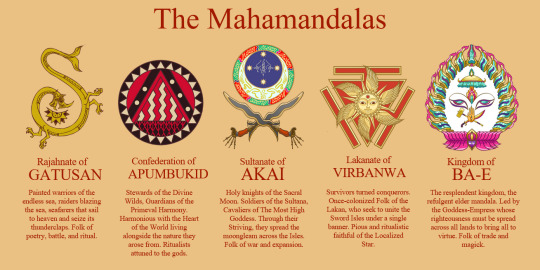
I've been posting the weapons I've been drawing for the game as kind of a countdown, leading up to the launch on October 10. I was planning to do this for Swordtember, but sometimes you gotta shift the goalpost a little bit. 3/7 blades down, behold the HINALUNG
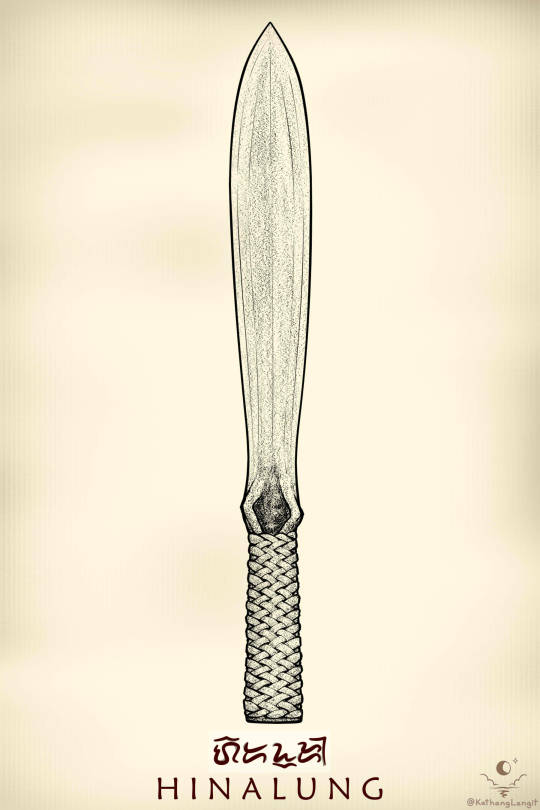
This multi-purpose blade comes in a few different shapes and sizes, but in general they are symmetrical and double-edged. They don't get much longer than one's forearm, and more often than not have handles wrapped in rattan lashings.
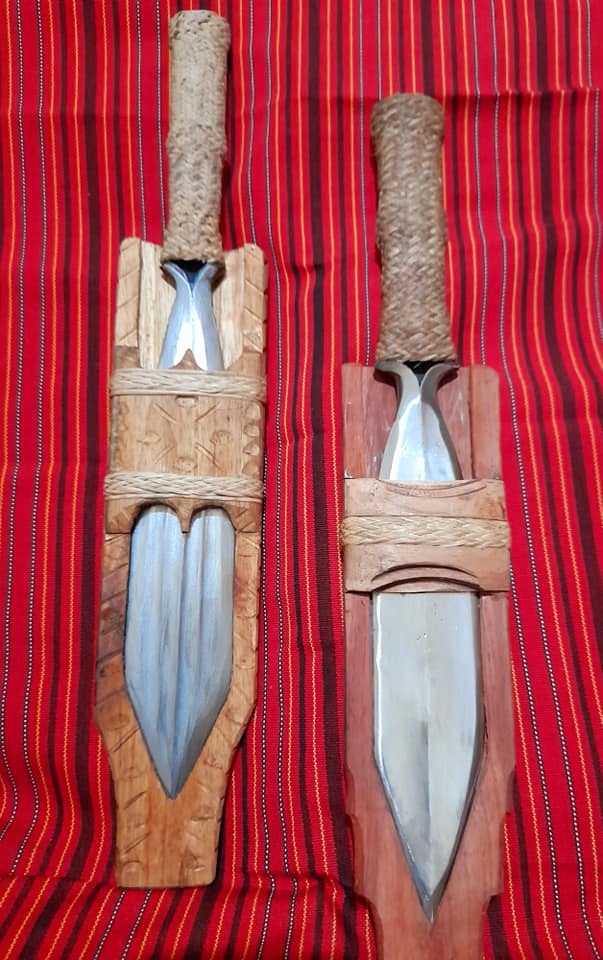
(Blades by Tatang HImanggo and one of his students- a certain Arnold; As shared by Biboy's Sharp Edges) If I'm not mistaken, the term "hinalung" is Ifugao- referring to a certain group of indigenous peoples in the Philippine Cordilleras- though the usage of the blade itself was widespread across the mountains of north Luzon. Nowadays, it isn't just Ifugao smiths making them, and a number of contemporary smiths from across the region seem to lay claim to the blade. In any case, the blade is of the Cordilleras, unconquered by Spain.
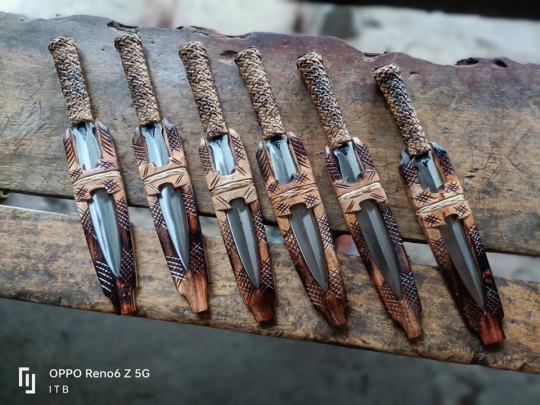
(Blades by Ifugao Traditional Blades) One more thing of note is the open scabbard, which seems to be common among blades in that region- not just the hinalung. Some of them boast enough space for more than one blade to be sheathed, and are often sold as novelties. The first example below has a large hinalung in the middle, joined by a pair of pinahig. It can very quickly get out of hand. These X-in-1 sets are usually sold as novelties.
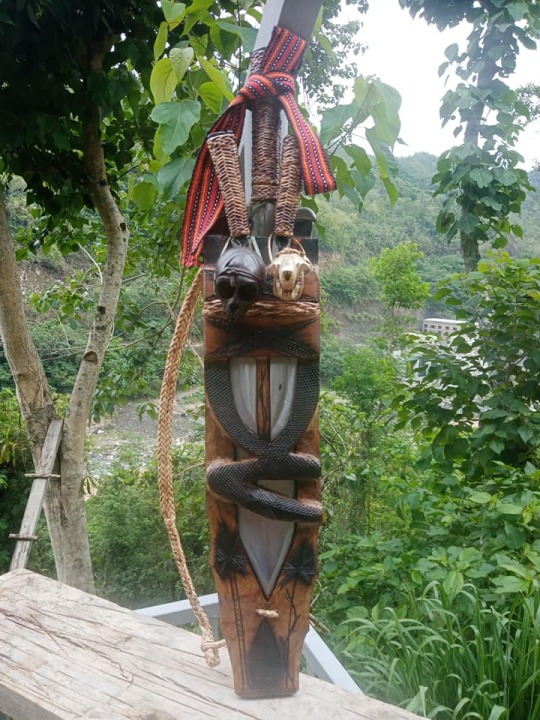

(Blades by Orinn Mongalini/Panday Anitu Mumbaki)

(Photo from Orinn Mongalini)
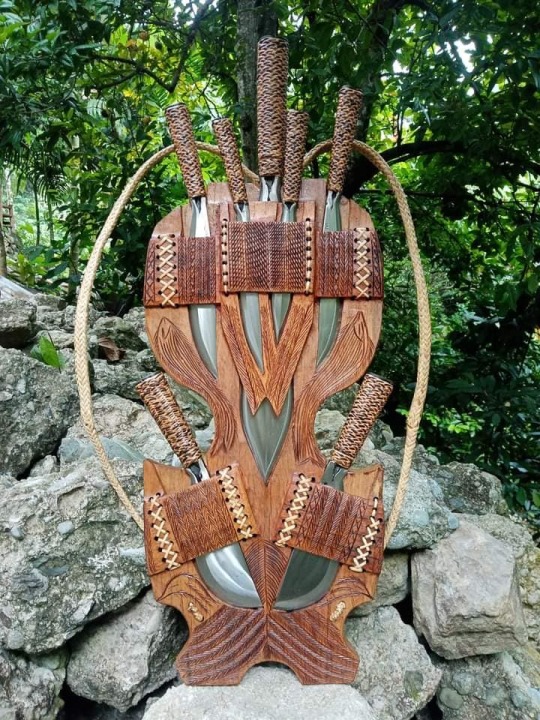
(Photo from Ifugao Artistic Blade)
Now for the fun part! You may be wondering why the handle is shaped the way it is, with that triangular opening near the base of the blade? Or perhaps you read the title of this post and you already know where this is going?

They double as spearheads! The handle itself is steel folded in to create a hollow socket, allowing the hinalung to be mounted on a wooden shaft, turning it into a spear. Supposedly, this spear-form was used for hunting. You can see the hollow socket more clearly here:
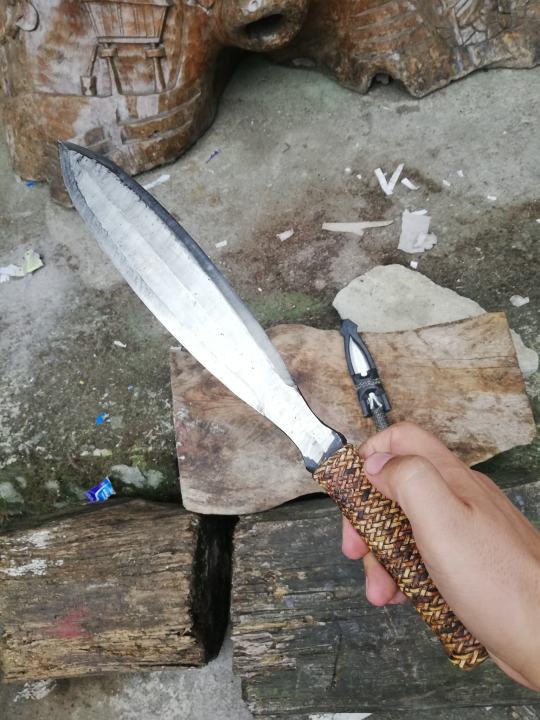
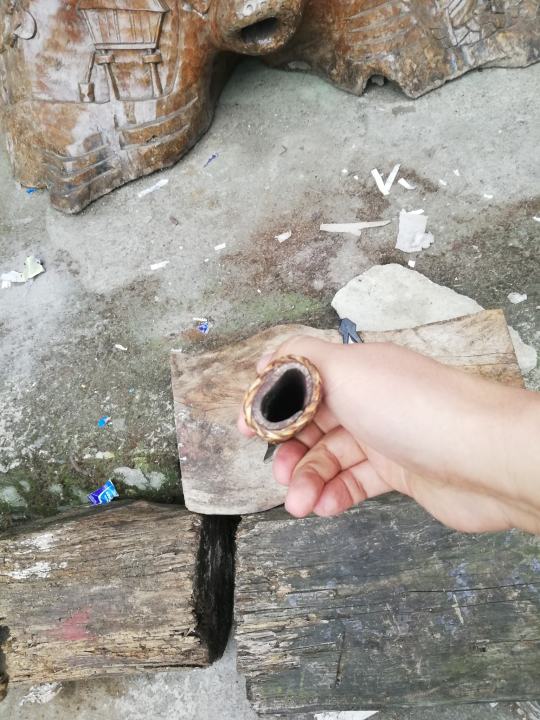
(Blade by HanYan Blades)
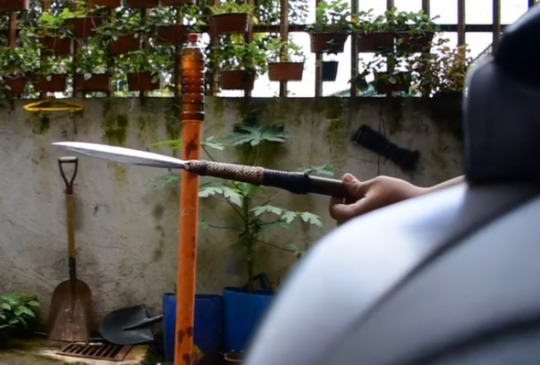
(Screencap from a video by AJ Blade Reviews testing the blade as a spear; Blade by Lakay Paul Dulnuan Sr.) As mentioned previously, the Philippine Cordilleras were never conquered by Spain, and as such were able to carry their traditions with a little more ease into the present day. It is very much apparent in the blade culture. Present-day smiths in the Cordilleras still forge hinalung, some of them stating they do it in the traditional way, others admitting to hewing to more modern methods.
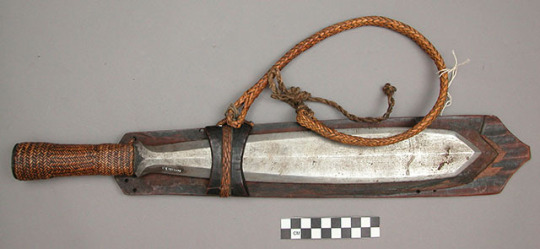
(Antique from the Peabody Museum of Archaeology and Ethnology)
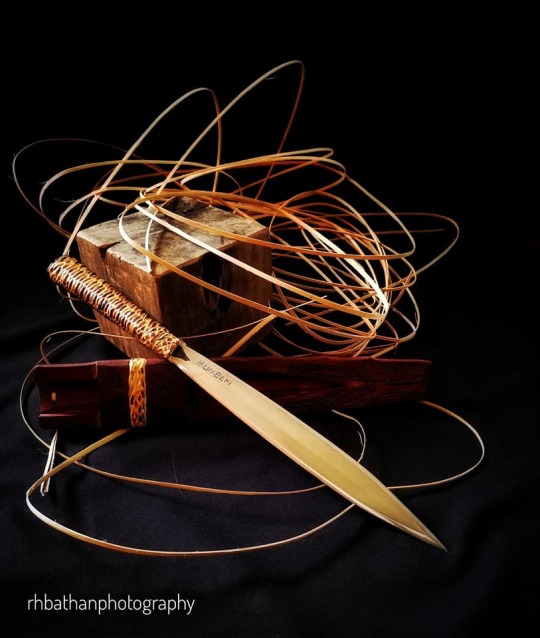
(Modern build by Lakay Pabian, photo by Ramon Bathan) Like I said before: Blade culture is alive and still developing. One of the Five Major Mahamandalas of Gubat Banwa pays homage to and gleans inspiration from living cultures like those I mentioned here. If you want to know what the first half of that sentence means, check out the game and its Kickstarter!
The Gubat Banwa Kickstarter launches in 5 days! Check it out here:
I've watched this game be started, written, and developed by like- one guy, who just managed to drum up enough interest and meet enough people willing to help shape the dream, and make it what it is today. It could not have gotten this far without all of them. Still, it remains a very small team of creators from the global south, with very limited resources. We would dearly appreciate any and all help in getting the word out about the game!
#gubat banwa#gamedev#ttrpg#ttrpgs#indie ttrpg#indie ttrpgs#tabletop rpgs#rpgs#rpg#southeast asia#southeastasia#dnd#kickstarter#swords#philippine blade#weapon design#dagger#philippine history#philippine culture#filipino artists#artists on tumblr#kathang langit#help us get the word out!#fantasy#fantasy worldbuilding#swordtember#bolo#itak#hinalung#igorot
98 notes
·
View notes
Text
The Sixth Blade - ... - Fear Itself
Last two days! Gubat Banwa launches on Kickstarter on October 10, and we need your help to get the word out! Silence your fear- stifle it if you must. Harness it if you can. Fear begets hesitation, Kadungganan, and when rivers bleed, and skies burn, and blades dance to the rhythm of cannonfire- Hesitation is death. Let the Sword Isles of Gubat Banwa paint your stories in its thousand colors, inspired by the intricate cultures of Southeast Asia. Carve your legacy into the world by blade and smoke as warrior Kadungganan in this tactical martial arts TTRPG.
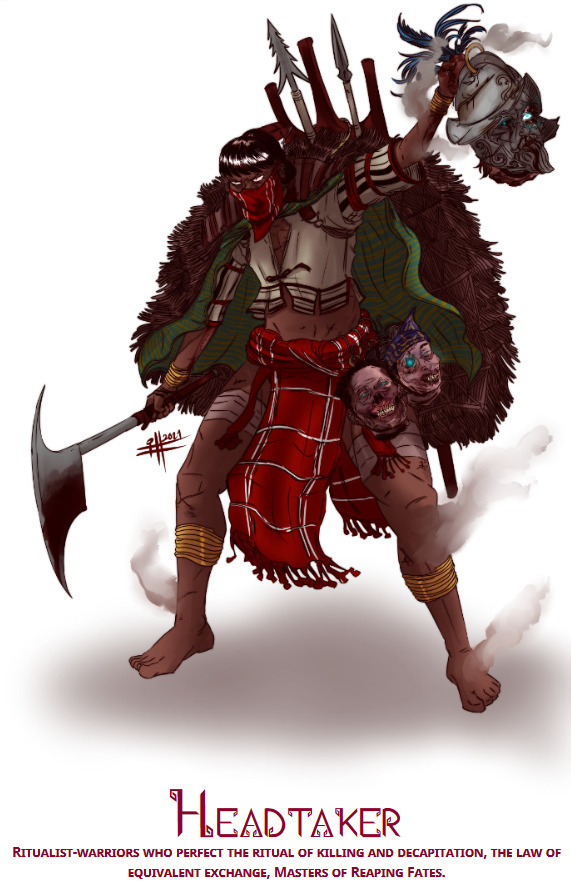
Not long now until the long-anticipated KS launch, and I've been posting the weapons I've drawn for the game as a sort of countdown. These were supposed to be Swordtember drawings, but the launch got bumped back a little bit. 6/7 blades! The penultimate entry goes to the CORDILLERAN AXE

Some time in June 2020, a certain weapon was intercepted in Australia entering the country from the United States. An ancient terror-weapon, which brought low the conquistadors of old, and drenched the soil of the pine mountains such that the ground remains the color of rust. In November the following year, the ax was returned to the Philippines. Strap in- it's about to get really convoluted.

(Photo from the Philippine Embassy in Australia) You may be wondering why I referred to this blade as a "Cordilleran Ax" rather than using a native term like in the rest of this series. That is mostly because the ax comes in many forms, and bears many, many names. Seriously, you wouldn't believe how many names there are for these things.
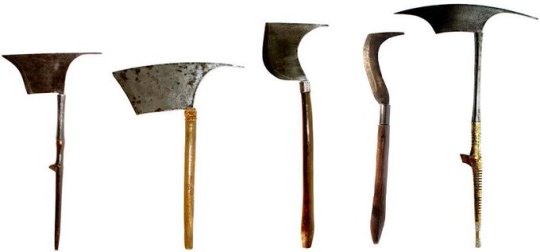
(Photo from the collection of Nonoy Tan) They are commonly called "head axes" (we'll get to why in a minute- but you can probably guess), referring to a collective of different blades of a more-or-less similar shape, used by the peoples of the Cordilleras. "Igorot" is a general term used to refer to these peoples of the mountains of north Luzon.

(Diagram by Lorenz Lasco)
You will recall from the thread on the hinalung that Spain never took the Cordilleras, allowing the peoples there to more easily preserve their traditions and cultures. These axes belong to some of those same cultures. These- too- were preserved from way back.
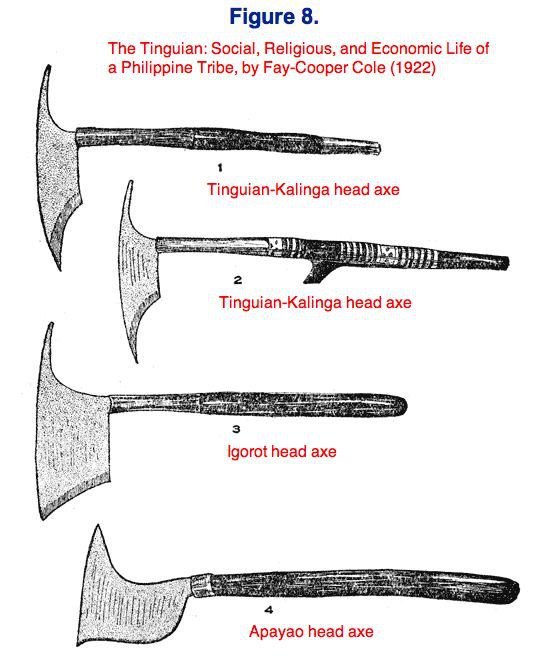
(Figure from The Tingguian: Social, Religious, and Economic Life of a Philippine Tribe by Fay-Cooper Cole) It's easy to forget that these objects- all of the blades I've been posting about- are very deeply embedded in cultures that still exist today. These peoples have their own names and stories and knowledge of these blades that I simply do not have access to the way they do. It's all I can do to try and deliver accurate info without misrepresenting anything.

(Photo from the National Museum) And try I have. This is a diagram I tried to make as a reference, way, way back.

I know a bit more now, I'm not sure if I still stand by this, I am sure that it will need some updating. Due diligence is the bare minimum we can do, to respect the knowledge of people who are still around. Allow me to try again! The one I drew in the image at the start of this thread is called the SINAWIT. This is the Kalinga variant of the axe. From what I can tell, those with the curved/concave cutting edges tend to belong in this category.
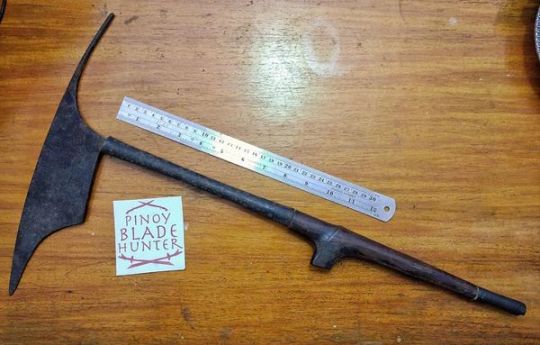
(Photo from Pinoy Blade Hunter) Supposedly, the protrusion on the handle is also indicative of a Kalinga origin.
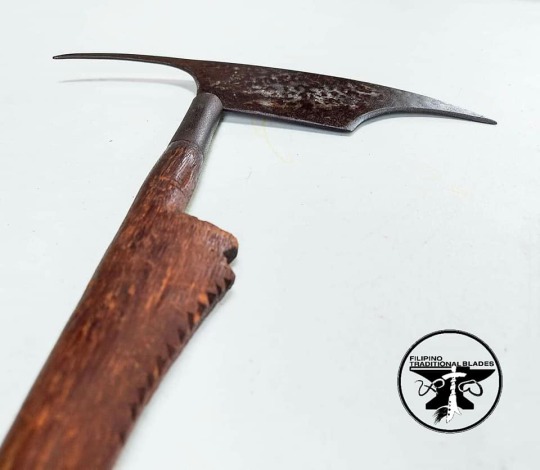
(Photo from Ursulo of Filipino Traditional Blades)
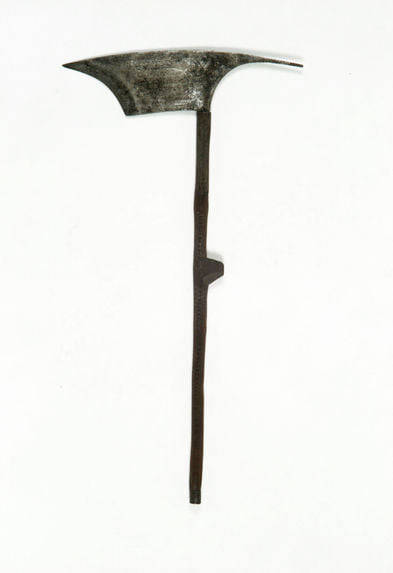
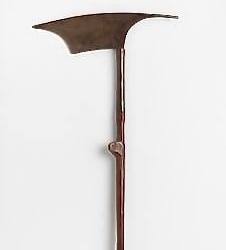
(Photos from Global Inventory of Filipiniana Artifacts) Here's some close-ups of another example, featuring ornamentation in the form of copper/copper-alloy "staples" along the handle, which may have also aided in providing grip.
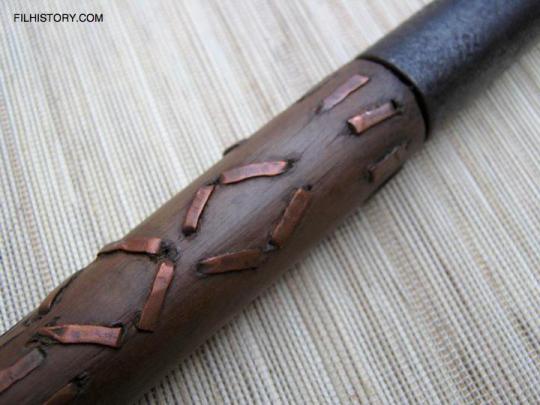
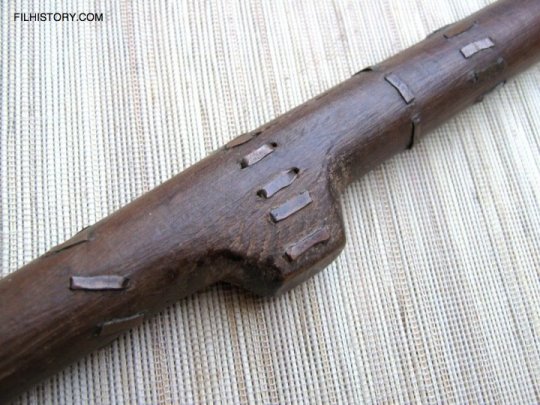
(Photos from Lorenz Lasco) Variations in size are common across all the axes we'll be looking at, some are short and fit well in one-hand, others are large enough to accommodate two. The biggest ones I've seen are sinawit.
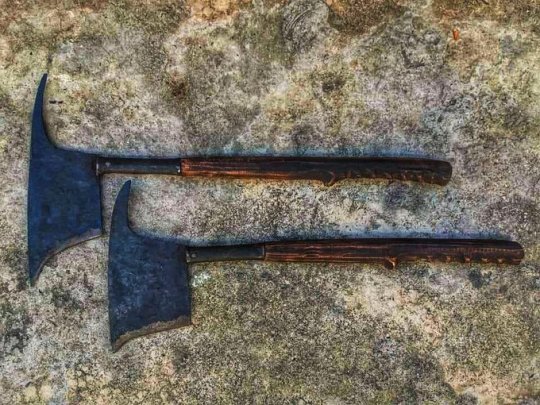
(Photo from Christian Vasquez of Filipino Traditional Blades)

(Photo from Ron Zambarrano) Next up is the GAMEN or GAMAN. This is the Bontoc variant of the axe. Here's a gamen (top) compared to a sinawit (bottom) of similar size. Notice the difference in the shapes of the blades.

(Photo from the collection of Zel Umali as shared by Filipino Traditional Blades) Another term that gets thrown around is "pinagas", though I believe this is a general term referring to all "head axes" rather than one specific variant. I could very well be wrong on this, as the word pinagas has to come from one of the many languages in the Cordlieeras- I'm just not certain which. This one was labelled "Bontoc pinagas".

(Photo from Zel Umali) The thickness of the blade tends to vary as durability requires. In particular, the spike on the back tends to be thicker overall. Portions of the blade closer to the handle appear to be thicker as well.
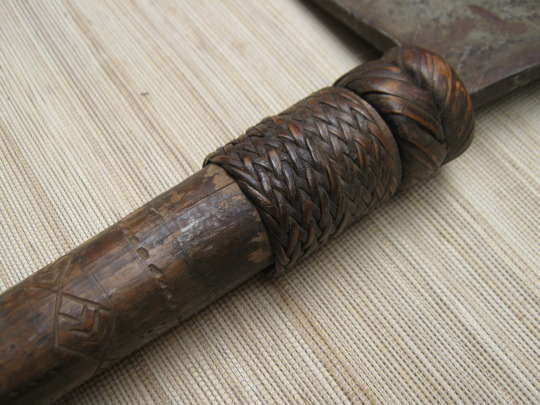
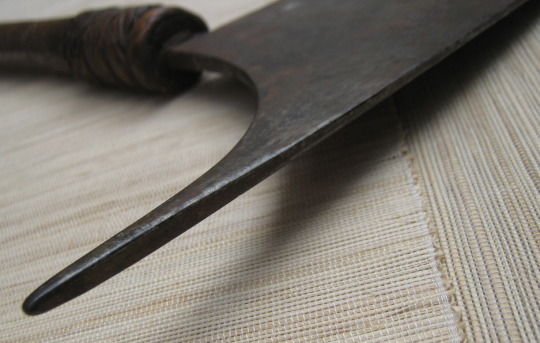
(Photos from Lorenz Lasco) Examples of the gaman as I have seen them tend to have more straight or sometimes convex blades. I am uncertain if the convex shape is a unique feature, or a product of happenstance, or just how whoever used this blade liked to sharpen it.

(Photo from Pinoy Blade Hunter) They also tend to be "taller" than sinawit I've seen, with blades that are almost like squares with spikes on the back, as opposed to sinawit that are more rectangular. Still following so far? Good- it's going to get more complicated soon.


I am not- by any means- formally educated on Philippine blades, so always take my words with a grain of salt. This ax inherited by a blacksmith in Baguio is something that might be gaman, but I can't categorize it with certainty without knowing more. The profile is not exactly the same, the spike is considerably longer and more curved.
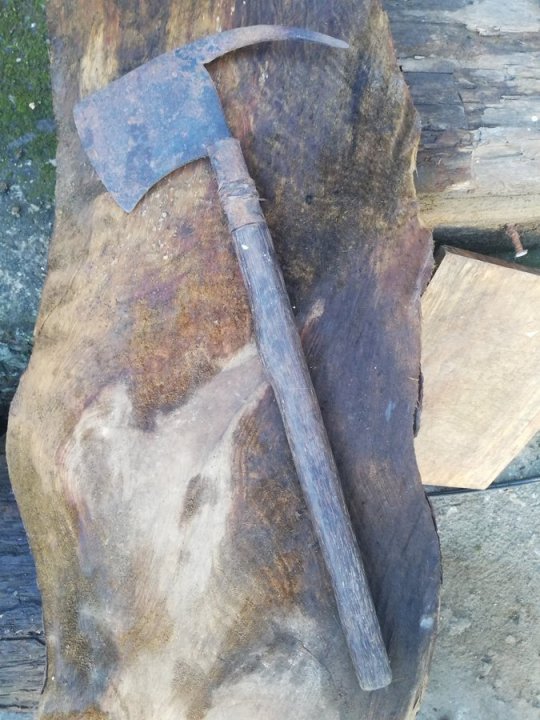
(Photo from HanYan Blades) But that's the least of our worries! The ALIWA, BINARAWAD, BADAN, BADON, BINAROY are only some of the terms used to refer to the Isneg variants. Remember when I said it would get convoluted?
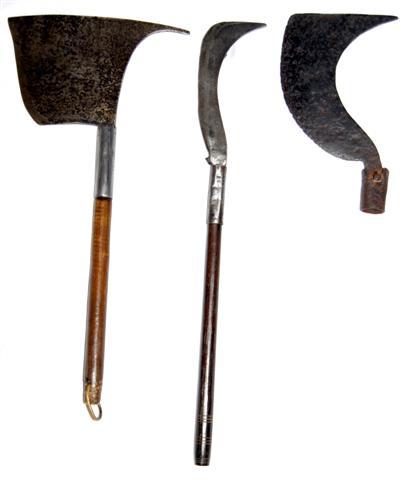
(Photo from Nonoy Tan; Identified as binarawad-badan-badon in that order) The binarawad in the previous photo looks- to my very untrained eye- to be similar to the gaman in many respects. Whenever I think I've identified a distinction, a different specimen shows up.
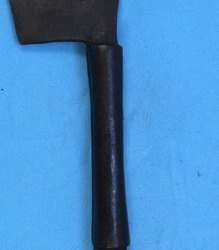
(??? from Rob Miller)

(Gaman(?) from Hearst Museum) Remember when I said the protrusion on the handle was uniquely Kalinga? But I also said taller/squarer blades were common in gaman? But the swept shape on the back looks emblematic of the Isneg variants we just saw? Identify that topmost blade for me, real quick.

(Photo from Pinoy Blade Hunter) Material exchange of culture makes a mess of categorization. The peoples of the Cordilleras regularly interacted- by trade, union, or warfare- and the influences clearly went all ways. Perhaps that blade above was made by a smith who took influences from a variety of sources. Perhaps the blade itself has worn out its old handle, and the new owner replaced it with this one There are a lot of ways this could have come about, it's difficult to say. Blades tend to make their way around. This sinawit- a Kalinga blade- has been passed down through generations, and was found in Sagada.

(Photo from Pinoy Blade Hunter) It certainly doesn't help when blades are found far from home and are labelled with confusing specific terms or useless general terms or just different terms entirely.
[Author's Note: Apparently there's a 30 image limit per post? I'll continue this in a reblog, I think.]
#gubat banwa#gamedev#ttrpg#ttrpgs#indie ttrpg#indie ttrpgs#tabletop rpgs#rpgs#rpg#southeast asia#southeastasia#dnd#kickstarter#swords#philippine blade#weapon design#philippine history#philippine culture#filipino artists#artists on tumblr#kathang langit#help us get the word out!#fantasy#fantasy worldbuilding#swordtember#axe#headaxe#cordillera#igorot#headhunter
64 notes
·
View notes
Photo

Scabbard of an Igrot Hinalung Dagger
2 notes
·
View notes
Photo

Scabbard of an Igrot Hinalung Dagger from the Philippines
2 notes
·
View notes
Photo

Hollow handle of an Igrot Hinalung Dagger
1 note
·
View note